Spicer Garage
Introduction
Text-to-speech Audio
The Jackson Hole Playhouse was built in 1916 with a very different appearance and purpose. It was originally built as a garage for wagon and automobile storage in the winter. A blacksmith shop was added in 1919 to help make repairs on the automobiles and in 1923 a Ford dealership opened under Walt Spicer. The building quickly became known as “Spicer’s Garage,” a name still associated with the building today. Spicer sold genuine Ford parts, and serviced a variety of vehicles. The building was equipped with electricity, a modern amenity unavailable to the rest of Jackson until the 1940s. In the 1950s the building was converted into a bowling alley by new owners Ed and Vera Cheney. They ran Cheney Electric, a radio and small appliance store. In 1959 the Cheneys remodeled the bowling alley into a 150-set theater. The building exterior was also changed significantly to help draw business as the Pink Garter Theater. It later became the Jackson Hole Playhouse in 1974.
Images
Spicer Garage c.1910s
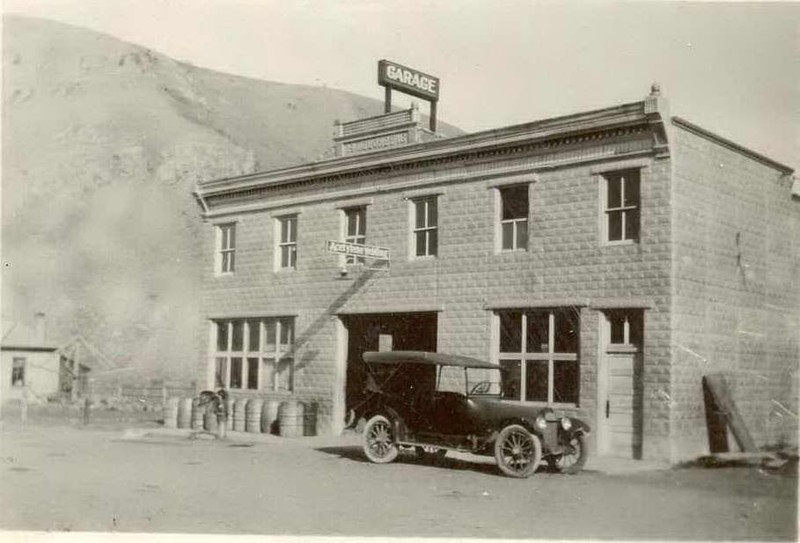
Pink Garter Theater
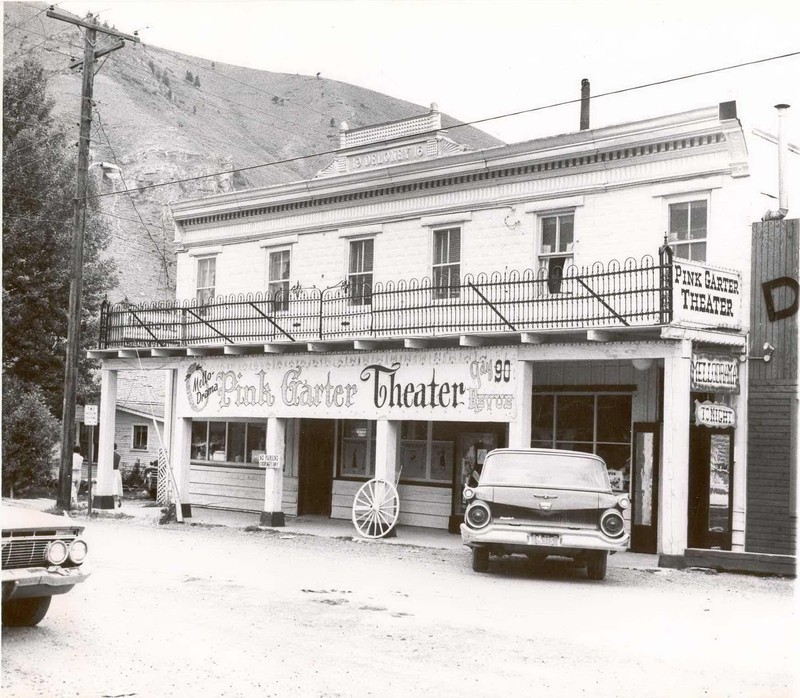
Cheney Electric c.1950s
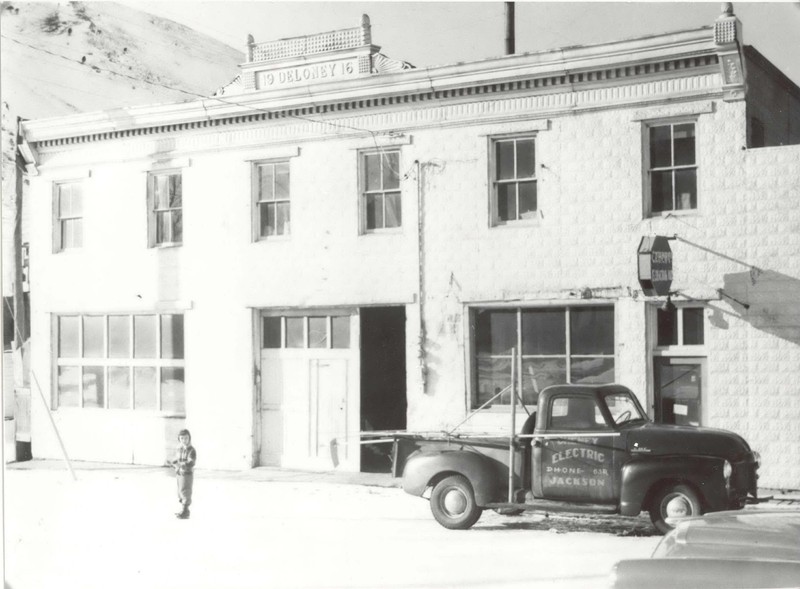
Spicer Garage c.1930s
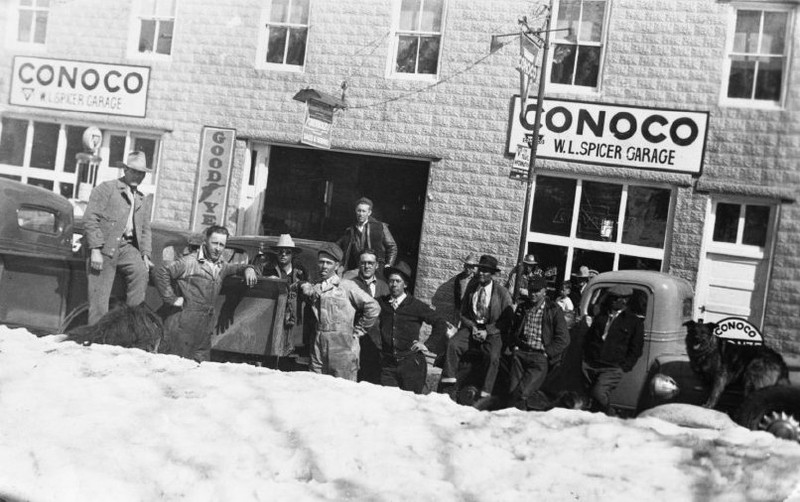
Spicer Garage Interior
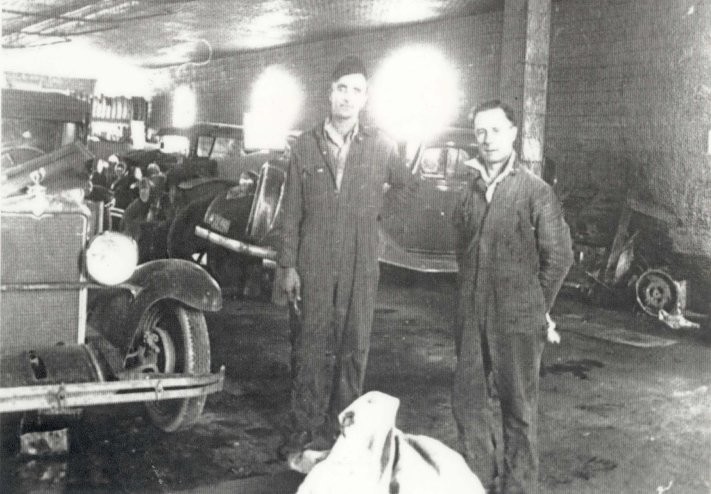
Backstory and Context
Text-to-speech Audio
The Jackson Hole Playhouse has experienced a lot of change over the last century. A building with many names, most forgotten, but one remains tied to the building itself. Above the marquee and second-story balcony sits a decorative pediment declaring the building’s origin, “Deloney 1916.”
Hyrum Deloney was a successful partner in his father Charles Deloney’s general store business, located directly to the east. He had become vice president of the Jackson State Bank, and wanted to expand his holdings. He constructed this building as a wagon and automobile storage garage, and he spared no expense on the exterior. Though today the original architecture is difficult to see beneath the Steamboat Gothic additions more familiar to those in the southeastern United States. However, original features visible in historic photos do remain. They are most evident on the second story, above the added balcony.
The stamped metal siding was meant to resemble stone blocks, with a highly decorated cornice and dentils (painted red) and decorated pediment with the “19 DELONEY 16” red lettering. The color scheme is modern, with historic photos showing a more monochrome palette. This stamped metal siding can be seen down the western elevation, and helps to delineate between the additions built onto the north end. This type of siding would have been in stark contrast to the exterior log and wooden frame buildings that made up the majority of the town. When the adjacent Deloney Store was built in 1906, it was part of a rush of buildings built with a brick veneer. The two buildings side-by-side would have looked impressively sleek and modern, reflecting the advancement of the Deloney family and their intention to make their businesses a permanent presence. The townsite of Jackson had been incorporated in 1914, and was beginning to evolve from a rural community into a proper town. The need for wagon and automobile storage marks a shift in the local economy. Previously, the Wort Livery Stable barn with storage for wagons and horses was the primary need. Deloney’s new garage was able to cater to those who were beginning to own their own automobiles.
The board and batten siding on the first story underneath the balcony is a later addition, originally the stamped siding covered the entirety of the front elevation. The large 10-light casement window on the western end and the small doorway with the two-light celestory window on the east end are original to the garage. A large central bay opening is now part of the entrance marked with a curved “Jackson Hole Playhouse” sign. The large double-door entrance was once a 6-light casement window. Both the large windows and open garage bay were intended to help flood the interior with light.
Hyrum Deloney also spared no expense to the interior, despite it being industrial. The interior was once a large open garage area, with electrified lighting, which was a modern amenity not available to the rest of town until the 1940s. A historic photo shows two men in boilersuits with the illuminated lights behind them. A state-of-the-art Cushman engine supplied the electric power, which also lighted the adjacent Deloney Store and a street lamp outside. In addition to the modern stone and brick exterior, the illumination would have made both of these buildings the most visible in town. This helped to attract clients for the future businesses that inhabited this building. In 1919 a blacksmith shop was added, to aid repairs to the wagons and automobiles that made use of the garage. George Irwin held the lease and oversaw six mechanics. In 1923, Walt Spicer made a fortuitous decision to move his Ford dealership from Kelly into Jackson. In 1927 a devastating flood wiped the town of Kelly from the map, with only two surviving buildings. The town never recovered to its former size, and Walt Spicer was lucky to have moved his business when he did. The building quickly became known as the Spicer Garage, a name which it retains today. Spicer operated in this building for two decades as a service station, dealership, and he sold Ford parts as well.
After Spicer, the building was briefly a Chevrolet dealership under Rowles Walquist, who moved across town. Anderson-Penton freight trucking moved in for a brief time after Chevrolet left. Finally in 1953, the building was purchased by Ed and Vera Cheney. The Cheneys lived upstairs in the apartment, and renovated the first floor into a bowling alley and pool hall. Under the Cheney tenure, several businesses moved in and out. They included Cheney Electric, which sold radios and home appliances, a photography studio, a gun shop, and all throughout the building was a community bus stop. The large open interior area was also occasionally used as a community event space. In 1959, the Cheneys remodeled the bowling alley into a 150-seat theater, and the exterior balcony was added at this time. Originally with a wrought-iron railing, it was later replaced with wood.
Even as a theater, the Playhouse was known by several names. First the Pink Garter Theater under the Cheneys, and in 1969 it became the Diamond Lil Theater. In 1971 it was the Jackson Hole Opera House, and in 1974 it became the Jackson Hole Playhouse.
Sources
Cassity, Michael. "Spicer Garage," Form prepared for the Teton County Historic Preservation Board, 1999.
"Jackson Hole Playhouse," If Walls Could Talk Series. Jackson Hole Historical Society & Museum. https://youtu.be/oHVKIkGSXPM?si=xKGb9rcaueZ14m4e
"Notice of Name Change," The Jackson Hole Guide, March 21, 1974.
Jackson Hole Historical Society & Museum
Jackson Hole Historical Society & Museum
Jackson Hole Historical Society & Museum
Jackson Hole Historical Society & Museum
Jackson Hole Historical Society & Museum
